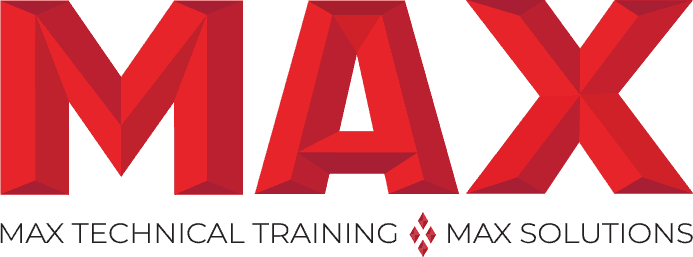03/25/2024
Share This Story, Choose Your Platform!

What Is an Agile Work Environment?
In today’s fast-paced and ever-evolving business landscape, the concept of agility has become increasingly crucial for organizational success. An agile work environment, characterized by its ability to swiftly respond to change and foster a culture of collaboration and innovation, has emerged as a cornerstone of modern organizations. At Max Technical Training, we understand that agility is a critical element for achieving organizational success in today’s fast-paced and ever-evolving business world. That’s why we offer comprehensive courses on Agile practices to equip professionals with the skills they need to thrive in dynamic work environments.
Our courses provide invaluable insights into the principles and methodologies that underpin Agile practices, enabling individuals and organizations to embrace flexibility, collaboration, and rapid adaptation. By understanding the importance of agility and its role in driving sustainable growth, professionals can effectively navigate complexities and seize opportunities in today’s volatile market conditions.
This blog post will dive into the essence of an agile work environment. You will learn what is an agile work environment, it’s characteristics, benefits, implementation strategies, and challenges. Through a comprehensive exploration, you will gain a deeper understanding of how fostering agility can transform organizational dynamics and propel businesses toward success in an era defined by change and innovation.
What Is an Agile Work Environment?
An agile work environment is characterized by its ability to respond swiftly to changes in the external environment or internal processes. It fosters a culture of empowerment and autonomy among employees, enabling them to make decisions autonomously within a framework of clear goals and objectives.
This approach promotes experimentation, learning from failures, and iterative development cycles. In essence, an agile work environment values individuals and interactions over processes and tools, focusing on delivering customer value through effective teamwork and communication.
Importance of Agile Work Environment in Modern Organizations
The importance of cultivating an agile work environment in modern organizations cannot be overstated. In today’s volatile business landscape, where disruptions are the norm rather than the exception, organizations need to be nimble and adaptive to stay ahead of the curve.
An agile work environment enables companies to respond quickly to market shifts, customer feedback, technological advancements, and competitive pressures. Organizations can enhance their agility quotient and drive sustainable growth in an increasingly unpredictable world by fostering a culture of innovation, collaboration, and continuous learning.
The Characteristics of an Agile Work Environment
Flexibility and Adaptability
In an agile work environment, flexibility and adaptability are paramount. This means the ability to swiftly adjust to changing circumstances, whether it be shifting project priorities, market demands, or unforeseen challenges.
Employees are encouraged to embrace change and remain open-minded towards new ideas and ways of working. Flexibility also extends to how work is structured, allowing for alternative work arrangements such as remote work or flexible hours to accommodate diverse needs.
Collaboration and Communication
Effective collaboration and communication are the cornerstones of an agile work environment. Teams are encouraged to work together seamlessly, breaking down traditional silos and promoting cross-functional interactions.
Regular team meetings, brainstorming sessions, and open communication channels facilitate idea-sharing and problem-solving. Transparent communication fosters a culture of trust among team members, enabling them to voice concerns, provide feedback, and collaborate towards common goals.
Transparency and Trust
Transparency within an agile work environment cultivates trust among employees and leadership alike. Open access to information regarding company goals, performance metrics, and decision-making processes empowers employees to understand how their contributions align with organizational objectives.
Trust is developed when leaders demonstrate honesty in their communications, follow through on commitments, and delegate responsibilities effectively. Building a culture of transparency and trust creates a cohesive workforce that feels valued and respected.
Rapid Decision-Making
In an agile work environment, rapid decision-making is crucial for maintaining momentum and responding swiftly to opportunities or challenges. Decisions are often decentralized, empowering teams to make informed choices quickly without bureaucratic delays.
Data-driven insights guide decision-making processes while considering the impact on stakeholders involved. By fostering a culture that values swift but well-informed decisions, organizations can adapt more effectively to dynamic market conditions while staying ahead of the competition.
Benefits of an Agile Work Environment
Increased Productivity and Efficiency
In an agile work environment, productivity and efficiency are significantly boosted due to the streamlined processes and focus on delivering value in shorter cycles. By breaking down work into smaller tasks or iterations, teams can make progress quickly and adapt as needed. This iterative approach ensures that projects move forward steadily without unnecessary delays.
With clear communication channels and a collaborative mindset, team members can coordinate effectively, eliminating bottlenecks and promoting a sense of urgency to meet deadlines. This increased productivity not only benefits the projects but also enhances overall organizational performance.
Enhanced Employee Engagement and Satisfaction
One of the key benefits of an agile work environment is its positive impact on employee engagement and satisfaction. Agile methodologies empower employees by giving them more autonomy over their work processes and decision-making. This sense of ownership fosters a deeper level of engagement as individuals feel more invested in the outcomes they contribute to.
Furthermore, the emphasis on collaboration within agile teams promotes a supportive and inclusive work culture where every voice is valued. As a result, employees are more motivated, satisfied, and committed to their roles, leading to higher retention rates and overall job satisfaction levels within the organization.
Improved Innovation and Creativity
In an agile work environment that values experimentation and continuous improvement, innovation thrives. By encouraging creativity through trial-and-error approaches, teams can explore new ideas without fear of failure. The iterative nature of agile methodologies allows for rapid feedback loops, enabling quick adjustments based on real-time insights.
This dynamic process not only fuels innovation but also sparks creativity among team members who feel inspired to think outside the box. By fostering a culture that embraces innovation as a core value, organizations can stay ahead of the curve in today’s rapidly changing business landscape.
Better Adaptation to Change
The ability to adapt swiftly to changing circumstances is crucial for organizational success in today’s volatile market conditions. An agile work environment excels in this aspect by promoting flexibility and responsiveness at every level of operations. Teams trained in agile principles are well-equipped to handle unexpected disruptions or shifting priorities with ease.
Through regular feedback mechanisms and iterative planning cycles, organizations can pivot quickly when faced with challenges or opportunities. This adaptive capacity not only ensures survival in turbulent times but also positions companies for sustained growth by embracing change as a constant factor in their strategic approach.
Implementing an Agile Work Environment
Leadership Support and Alignment
In order to successfully transition to an agile work environment, strong leadership support and alignment are crucial. Leaders within the organization need to not only understand the principles of agility but also actively endorse and champion the shift towards a more flexible and collaborative work culture.
This involves creating a clear vision for what an agile work environment looks like, aligning strategies with this vision, and ensuring that all levels of management are on board with the change. Without top-down support, it can be challenging to drive meaningful transformation across the organization.
Cross-functional Teams
One of the key aspects of implementing an agile work environment is the formation of cross-functional teams. These teams consist of individuals from different departments or disciplines who come together to work on specific projects or initiatives. By breaking down silos and fostering collaboration between various areas of expertise, cross-functional teams are able to approach problems from multiple perspectives and leverage diverse skill sets.
This not only leads to more innovative solutions but also promotes a sense of ownership and accountability among team members. Establishing effective communication channels within these teams is essential for ensuring seamless coordination and alignment toward common goals.
Adopting Agile Methodologies like Scrum or Kanban
Another important step in implementing an agile work environment is adopting specific methodologies that facilitate agility in project management and workflow processes. Popular frameworks such as Scrum or Kanban provide structured approaches to organizing tasks, prioritizing activities, and enabling iterative development cycles.
These methodologies emphasize principles such as continuous improvement, self-organization, and adaptive planning, which are essential for thriving in dynamic business environments. By embracing these agile practices, organizations can streamline their operations, increase productivity, and respond more effectively to changing market demands.
Ongoing Feedback Mechanisms
Feedback mechanisms play a vital role in sustaining an agile work environment by promoting continuous learning and improvement. Regular feedback loops enable employees to receive constructive input on their performance, identify areas for growth, and make necessary adjustments in real time.
This ongoing feedback culture fosters transparency, trust, and open communication within teams, leading to increased engagement and motivation among employees. Implementing tools for providing feedback efficiently can include regular one-on-one meetings between managers and team members, anonymous surveys for collecting input from staff at all levels, and retrospective sessions after project completions to reflect on successes and challenges faced during the process.
Challenges in Creating an Agile Work Environment
Resistance to Change
One of the primary challenges in establishing an agile work environment within an organization is often the resistance to change. Employees, especially those accustomed to traditional hierarchical structures and ways of working, may find it challenging to adapt to the dynamic nature of agility. Resistance can stem from fear of the unknown, concerns about job security, or simply a reluctance to alter established routines.
To overcome this challenge, organizations must focus on fostering a culture that values innovation and continuous improvement. Providing adequate training and support for employees transitioning to agile practices can help alleviate resistance and create a more receptive environment for change.
Siloed Departments
Another common obstacle in creating an agile work environment is the presence of siloed departments within an organization. Silos prevent effective collaboration and communication across different teams or functions, hindering the seamless flow of information essential for agility. A silo mentality often leads to duplication of efforts, conflicting priorities, and a lack of holistic perspective on organizational goals.
Breaking down these silos requires a strategic approach that emphasizes cross-functional teamwork, shared objectives, and open dialogue between departments. Organizations can foster a more cohesive and integrated work environment conducive to agility by encouraging interdepartmental cooperation and breaking down barriers that isolate teams.
What Is an Agile Work Environment: Conclusion
In today’s rapidly evolving business landscape, the ability to adapt and innovate quickly is paramount for organizational success. An agile work environment, characterized by flexibility, collaboration, and rapid decision-making, offers a blueprint for navigating the complexities of modern-day challenges. At Max Technical Training, we recognize the transformative power of agility and are committed to empowering professionals with the skills needed to thrive in dynamic work environments.
By joining Max Technical Training and mastering Agile development through our comprehensive courses, individuals and organizations can unlock the full potential of agility. From understanding the principles of Agile methodologies to implementing cross-functional teams and fostering a culture of continuous improvement, our courses provide practical insights and strategies for driving sustainable growth in today’s volatile market conditions.
Don’t let the challenges of change and siloed departments hinder your organization’s progress. Embrace agility with Max Technical Training and embark on a journey towards enhanced productivity, innovation, and resilience. Together, let’s shape the future of work with agility at its core. Join us today and unleash your potential in the ever-changing world of business.
Read More Articles From MaxTrain Technical Training
AI UX 101
AI UX 101 At Max Technical Training, we understand the importance of leveraging AI in creative fields. In this blog post, we dive into the dynamic realm of AI UX – the fusion of artificial [...]
.NET vs JAVA. What Is The Difference?
.NET vs JAVA. What Is The Difference? Did you know that according to a state of Java survey, over 98% of coders use Java in software or infrastructure? In this blog post, we’ll explore the [...]
How Does AI Answer Questions?
How does AI answer questions? Artificial Intelligence (AI) has revolutionized the way we interact with technology, particularly in the realm of question-answering. With advancements in natural language processing and machine learning, AI systems have [...]
What Defines the Behavior of an Object in Object-Oriented Programming?
What Defines the Behavior of an Object in Object-Oriented Programming? The short answer is that the method defines the behavior of an object. To answer the question fully, we must first explore what an [...]
How to Print the Current Directory in Python
How to Print the Current Directory in Python In Python programming, understanding how to get the current directory, also known as the Python current directory, is essential for various tasks. Whether you're managing files, [...]
Visualising Linear Mixed Effects Model Python Basics
Visualising Linear Mixed Effects Model Python Basics At Max Technical Training, we believe in empowering individuals with the skills they need to excel in today's competitive tech landscape. One crucial skill for data scientists and [...]












